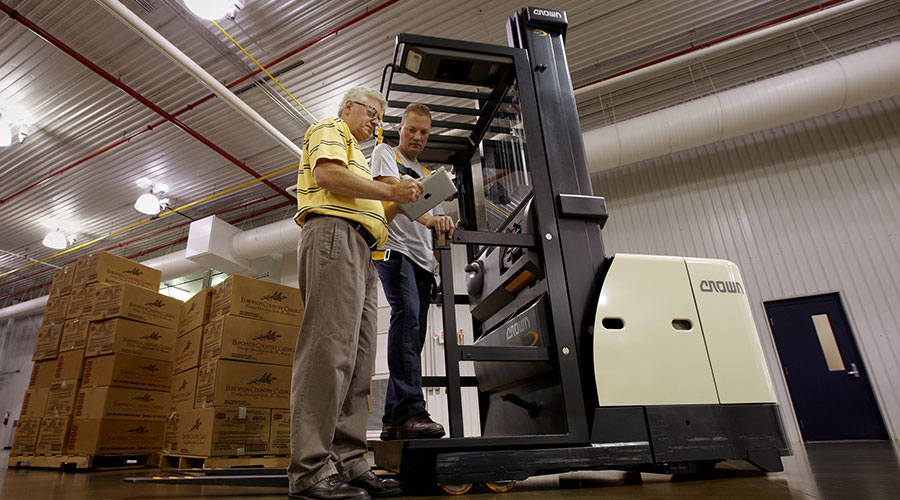Using an Integrated Approach to Safety

Crown Equipment is committed to helping customers maintain a safe operation with equipment designed around the operator, in accordance with industry standards. A successful safety program considers key elements that can positively contribute to employee safety. In this forklift safety blog series, with topics inspired by our new e-book “An Integrated Approach to Forklift Safety,” we explore the components of an integrated safety approach and how to ensure a strong safety culture.
Maximizing your investments in safety – and striving for sustained focus and improvement – requires supporting each of the components of a comprehensive safety program with strategies for managing behavior and organizational change. While that sounds complicated, it boils down to a commitment to communicating and reinforcing the “why” and “how” of improving safety at multiple levels.
Forklift connectivity solutions support the ability to set and achieve measurable safety goals for both the organization and its individual operators. They enable more accurate benchmarking of current performance and provide the ability to identify the causes of accidents and damage. With this knowledge, managers can address the root causes of the product damage, identify and change incorrect behaviors, and set the right goals for improvement.
With no way to measure safe operating practices, performance evaluations may lean too heavily on productivity metrics without considering the costs of achieving that productivity. Connectivity solutionsallow goal setting for individual operators to help encourage behavioral changes and emphasize safety. At the same time, connecting forklifts to an operator and fleet management system can provide the ability to control access to equipment, automate processes that streamline safety compliance and receive a more complete view of how employees are performing.
At first, you may face resistance from employees as a result of this increased accountability. The following seven key considerations can result in employees embracing change and gaining a better understanding of the value and positive impact of the change on the company’s safety culture and business objectives:
- Consider
Identify the likely effects of proposed changes on the workforce.
- Communicate
Discuss upcoming changes with employees, answer questions, address concerns and define employee roles in successful implementation.
- Plan
Tailor change implementation to reduce frustration.
- Train
Conduct structured, hands-on trainingthat is aligned to workers’ interests and responsibilities.
- Engage
Provide employees an opportunity to contribute throughout the change implementation.
- Monitor
The reinforcement of training is critical during the monitoring process.
- Expand
Create a plan to build on early success either by expanding on the change or tackling new business objectives.
Change is not always easily embraced by all members of a workforce, but it can be critical to improving safety awareness and performance, and it should be nearly constant as organizations evaluate and enhance their safety programs. These key considerations can help ease the stress of change while fostering greater workforce engagement and motivation – all factors that can help improve safety adherence.
Peer-to-peer communication can be equally effective as supervisor-employee interactions. Programs that formalize these communications can empower employees, build teamwork and encourage each team member to take responsibility for their safety as well as that of others.
While there is no simple solution for creating the organizational and behavioral changes required to achieve meaningful and sustainable improvements in safety, there are tools and methods that have consistently proven effective.
With a clear roadmap, the right tools and empowered employees, an integrated safety culture can be within reach. For more information about safety best practices, download our new e-book, “An Integrated Approach to Forklift Safety.”